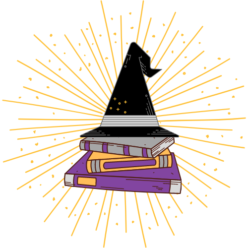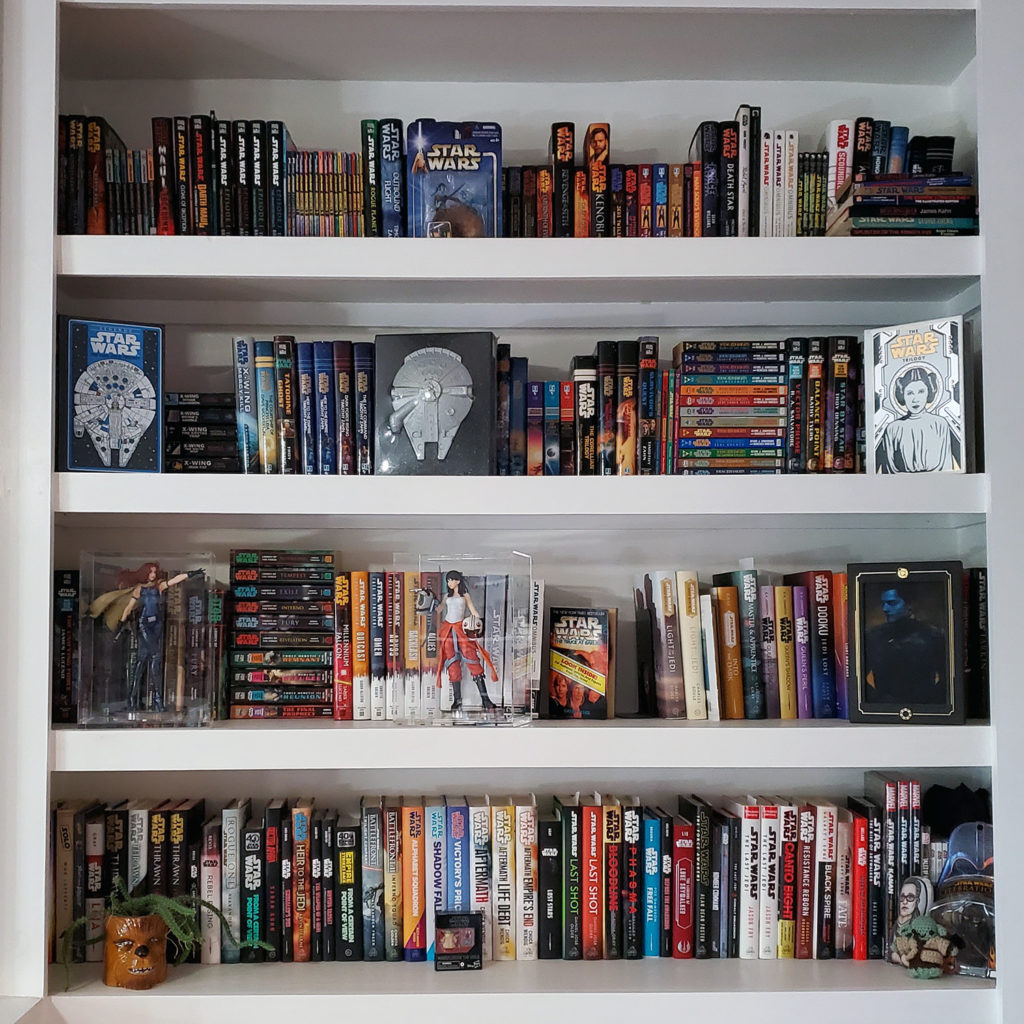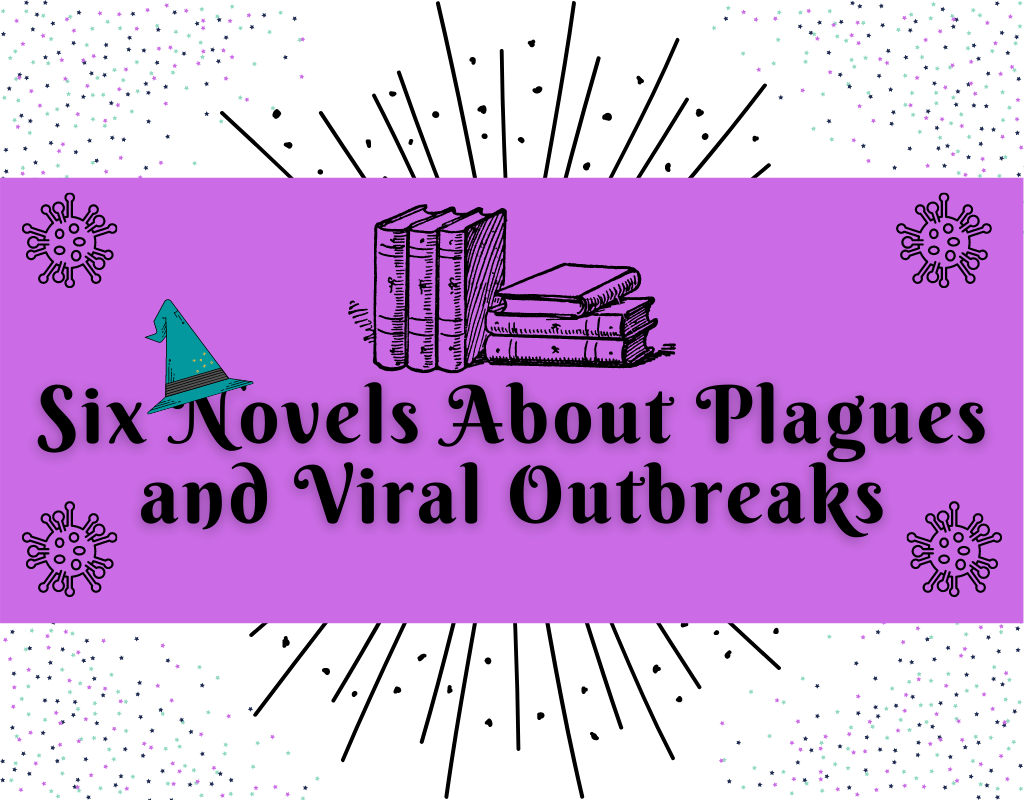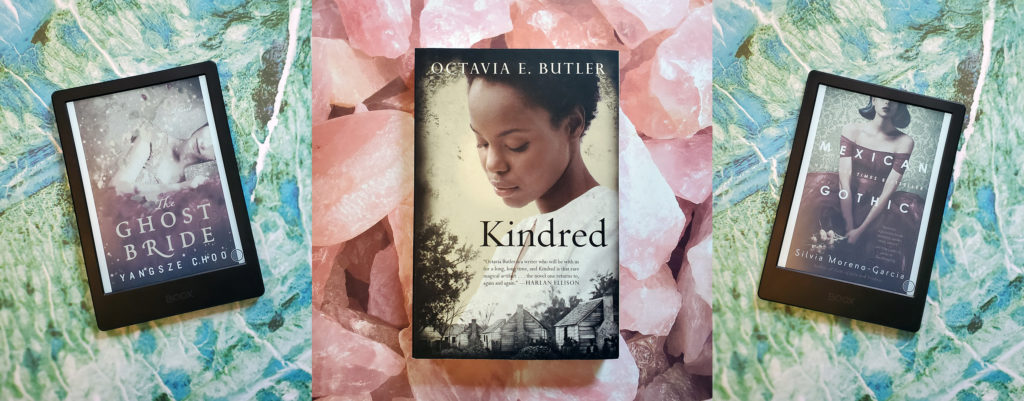While Pride Month is a great time to dip your toes into the waters of queer speculative fiction, there are too many great options to limit yourself to just thirty-one days! (Plus, queer folks are queer 24/7, not just in June, so why not celebrate natural human diversity all year long?)
For this mini-list, I’ve selected three of my favorite novels by LGBTQIA+ authors. This post does contain affiliate links to Bookshop.org. If you make a purchase using one of these links, you’re helping support both this blog and indie bookstores at no extra cost to you!
Be gay. 🏳️🌈 Read books! 📚
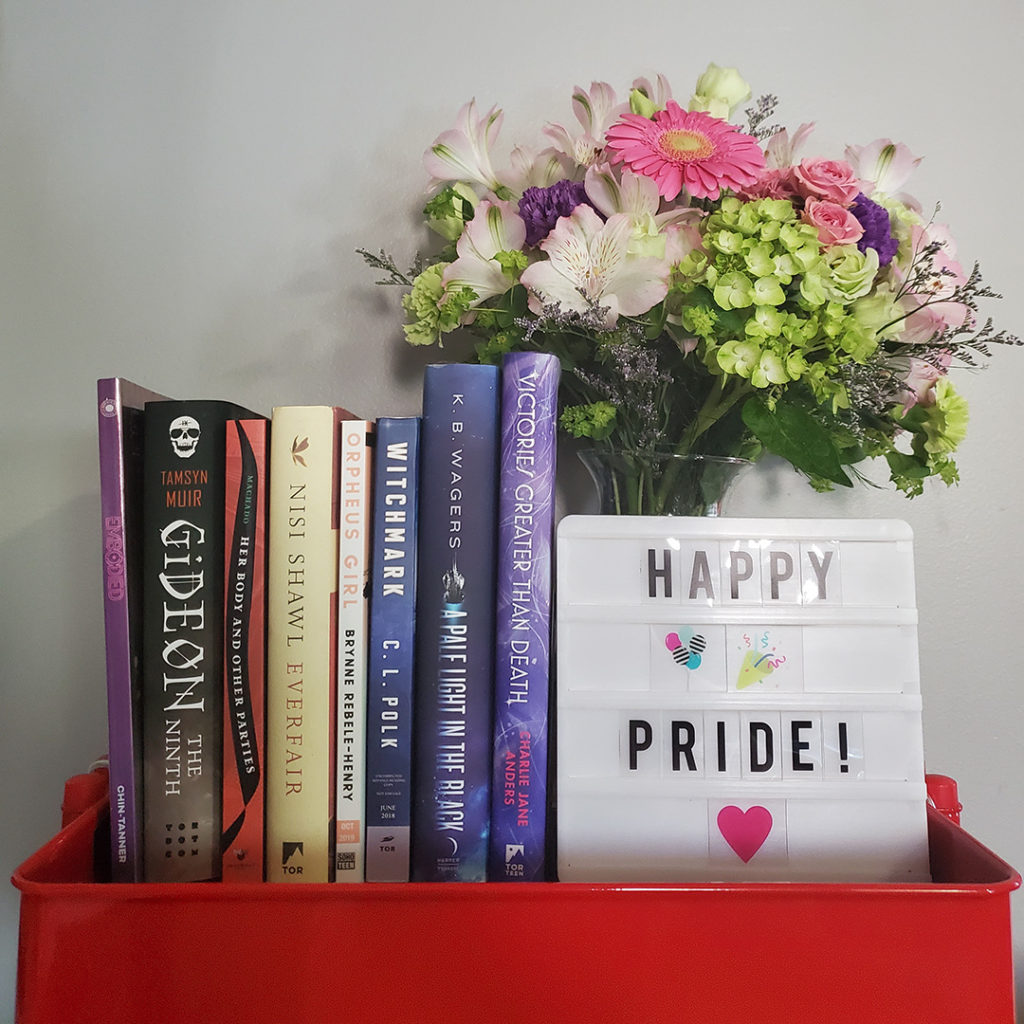
Gideon the Ninth by Tamsyn Muir
Gideon the Ninth was pitched to me as “lesbian necromancers.” Although the main characters are indeed queer, and one of them is indeed a necromancer, “lesbian necromancers” doesn’t even begin to scratch the surface of how utterly brilliant, funny, gripping, and goddamn heartbreaking this book is. In fact, it was so utterly brilliant, funny, gripping, and goddamn heartbreaking that as soon as I’d finished listening to the excellently narrated and produced audiobook, I hit play again and read it a second time.
But in case that’s not enough of an endorsement for you, let me tell you a little bit about the plot, too. The eponymous Gideon dreams of leaving her prison in the Ninth House to become a soldier, but Harrowhark Nonagesimus, the de facto leader of the Ninth House and a powerful necromancer, has other ideas. She recruits Gideon to be her cavalier—basically her personal swordswoman—as she goes on a quest to become a lictor for the undying emperor. Together, they have to compete against necromancers and cavaliers from other houses to solve magical puzzles and unlock the secrets to immortality. Only, of course, things do not go as planned.
Also be sure to check out the sequel, Harrow the Ninth!
Behind the Throne by K. B. Wagers
My bookish love affair with K. B. Wagers began in the library, as all great love affairs do. It was 2016, and I was clerking at the main desk of my library when we got a new book for the science fiction section: Behind the Throne. The title didn’t catch my eye at first, but the tagline did: “…with a heroine as rebellious as Han Solo, as savvy as Leia, and as skilled as Rey.”
While books or movies that compare themselves to Star Wars rarely live up to the hype in my fangirly estimation, I liked the cover art and the concept, so I checked the book out and took it home. I started it that evening, and, well, let’s just say the book—and its heroine—definitely lived up to, and then shot right past, my expectations.
Hail Bristol is a gun runner and a smuggler who’s been doing her utmost to leave her past behind her. But, of course, it catches up to her. Now, she has to face the fact that she’s the last surviving member of the royal family of the Indranan Empire, reconcile with her demons, and save her people. This is a fast-paced, high-stakes, tense but enjoyable read with relatable characters you can’t help but fall in love with.
Also be sure to check out the other two books in the trilogy, After the Crown and Beyond the Empire!
Sorcerer of the Wildeeps by Kai Ashante Wilson
A few months ago, I was working on a list of queer speculative fiction when I realized I had zero gay men on my list. I wracked my brain trying to come up with a few, scoured my Goodreads lists, and still came up empty handed. I went looking, and found Kai Ashante Wilson’s hauntingly beautiful and devastating novella, Sorcerer of the Wildeeps.
Wilson combines nonlinear storytelling with lush prose to create a story that echoes the way many of us experience memory and grief: in pieces and fragments; wisps of conversations, moments from larger events, and the ebb and flow of emotion through it all. If you’re not a fan of nonlinear stories, you may find Sorcerer of the Wildeeps a challenging read, but either way, you’ll find it a rewarding experience.
The story follows two earth-bound demigods who must use their powers to keep a caravan of merchants and soldiers safe from the dangers of the road, and especially from a man-eating supernatural beast. Although the plot is straightforward, the beats of the story echo like drums long after you turn the last page.
There’s also a sequel, called A Taste of Honey.
There are so many more amazing and wonderful speculative books by queer authors. I’ve compiled some of them in this Bookshop list called “Read the Rainbow: Speculative Fiction by LGBTQIA+ Authors,” but my list is far from authoritative. I’d love to hear who some of your favorite queer spec fic authors are in the comments!
Who’s your favorite queer speculative author? Let me know in the comments, on Twitter @bookwitchblog, or Instagram @bookwitchblog!
